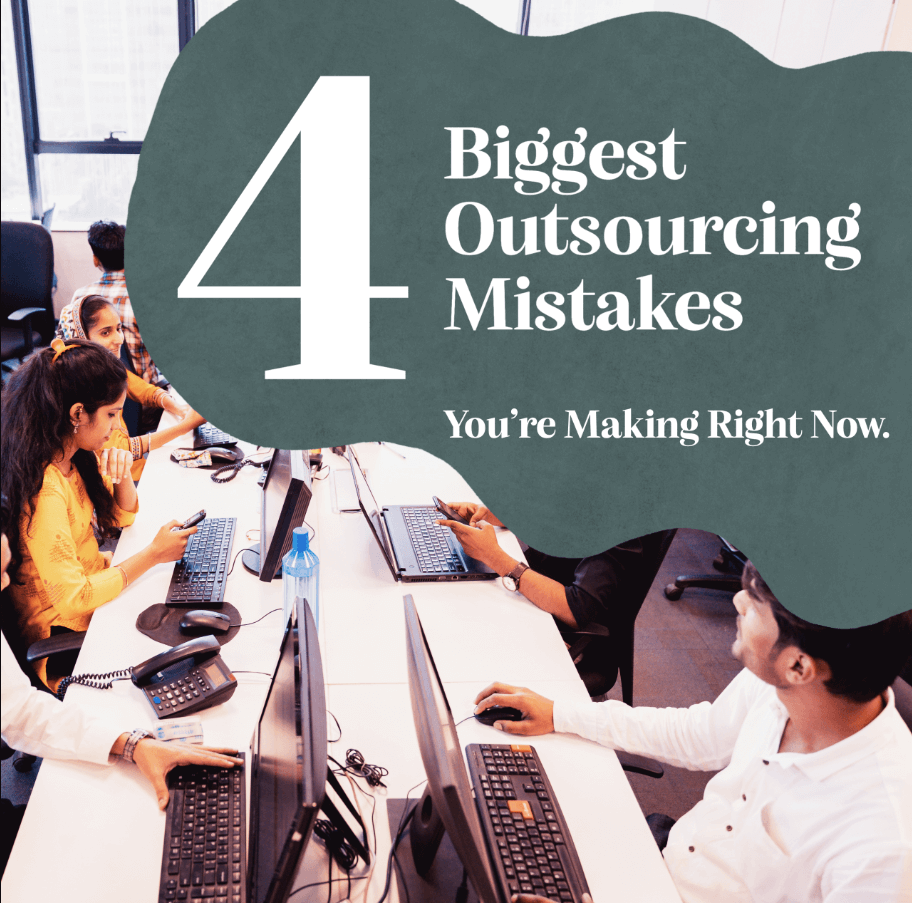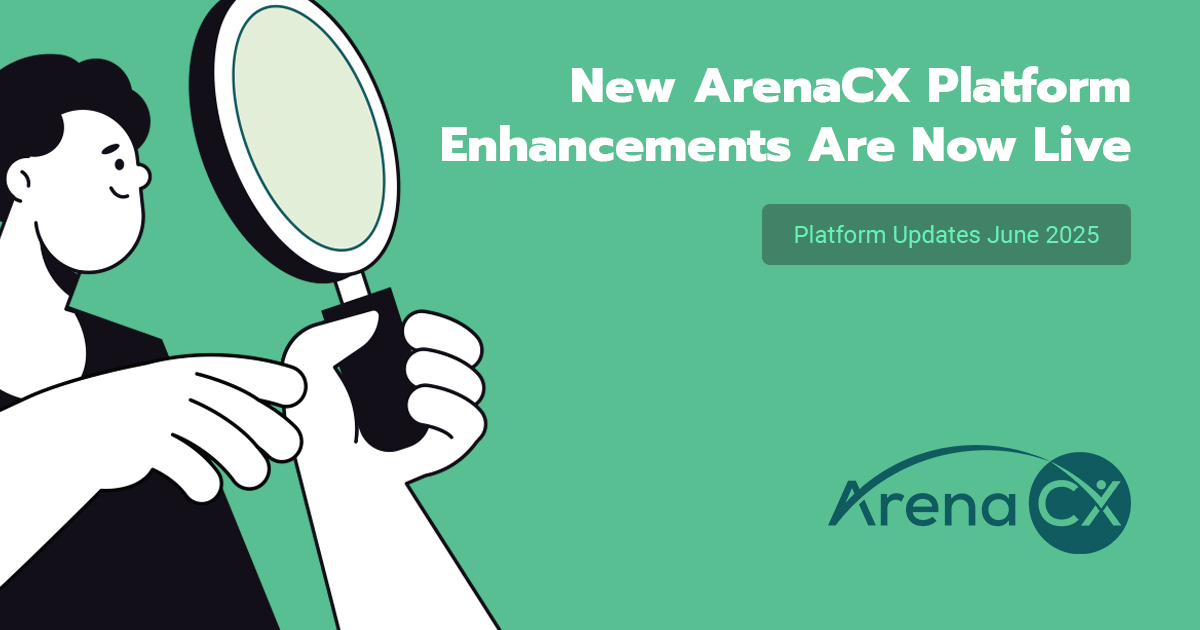Okay, 4 mistakes you’re making may be a little harsh. I should clarify by saying that the traditional outsourcing process as we see it working today doesn’t really allow us not to make these mistakes.
As you’re reading along, don’t feel bad if you realize you’re falling into these common traps – almost everyone else in the industry is too. Up to this point, customer service professionals who rely on outsourcing to assist with their customer support don’t have an easy task when it comes to selecting the right contact center partners – experiencing rigorous RFP processes, to long contract negotiations, to partner performance evaluation and management, and even performance correction if your partner isn’t meeting expectations.
Even if you’re following all of the tips we suggest in 3 Lessons for Selecting the Right Contact Center Partner, checking all the boxes to outsourcing successfully, and have strong existing partnerships, you’re likely still missing out on some critical traits required to remain resilient in the face of the unexpected.
Long story short, it’s not you. it’s the entire outsourcing model.
So rather than talking about what YOU are doing wrong, I want to share some thoughts on what you could be doing BETTER if you step outside the traditional BPO process and start thinking about how you wish the outsourcing process could work (hint: your wish might not be too far outside the realm of possibility).
Mistake #1: Focusing too much on price
If you’re currently outsourcing, or considering outsourcing, you likely have some knowledge of and experience with Requests for Proposals (RFPs). When searching for the right contact center partner(s), each contact center that you’re considering will provide your company with an RFP. Chances are, most RFPs you’ve evaluated have looked pretty much the same with the exception of one determining factor: price.
Since the conception of outsourcing, contact centers have competed on price. But there’s a structural flaw with this method: more affordable headcount often means less satisfied customers.
With customers as the life force of your business, their happiness is critical – can you afford not to give them the best experience?
It’s time to modernize the way we think about outsourcing, and understand that competing on price no longer makes sense.
Think about selecting a contact center partner like you would think about buying your next home. With your budget in mind, you look at a handful of houses within the range but it isn’t your sole focus or even the deciding factor. Rather, you focus on the structure of the home, how well it will fit your family, how up to date the appliances are, and if the neighborhood is somewhere you can see yourself for a while… the list goes on. After looking at a half dozen or more houses, you find and select the one that’s the best fit for you and your family, not necessarily which one was the cheapest.
The same should be true for selecting a contact center. How up-to-date are their systems and do they integrate well with yours? Will they be able to represent your business in a way that makes you proud? How does their team operate and does it seem that they could fit seamlessly into your operations? Price matters, but having a true partner that represents your business with integrity and provides real results is what will make the difference in your outsourcing performance.
In our Free Downloadable Guide: Achieving Resiliency, we detail the T.E.A.M. method, coined by ArenaCX President Alan Pendleton. This framework helps you simplify, organize, and prioritize risk management and determine the best response strategies. Interested in learning more? Download the Free Guide today!
Lesson 1: Focus less on the price and more on the fit – you’re likely to see better return in the form of more repeat customers and word-of-mouth acquisition.
Mistake #2: Committing to a single outsourcing partner.
Another key problem with the way businesses outsource today is that they typically only have one or two contact center partners. Maybe you don’t need a ton of agents and a single partner is enough to cover your needs. The problem is having all of your eggs in one basket, especially if you don’t have any internal support staff and rely strictly on outsourcing. You could be setting yourself up for major issues down the line.

Imagine if your only source of support had an unexpected natural disaster that caused their systems to shut down, or they experienced a security breach and had to shut their systems down for an extended period of time. This leaves you and your team vulnerable. You find yourself running internal fire drills and changing your operations rapidly to adapt to the influx of tickets that are now your responsibility to figure out how to handle.
Whether it’s rushingly hiring internal agents or finding a new contact center partner, you’re likely not going to be able to make the best hiring decisions in the midst of a customer support crisis. (It’s stressing me out thinking of this scenario, you get my point.) Do yourself a favor and prepare for the unexpected so you can adapt with ease.
Lesson 2: Relying on a single partner can make you vulnerable. Be prepared to adapt by having a network of partners you can rely on when you need them.
Mistake #3: Signing a long-term agreement
If you’ve been outsourcing for a while, you probably understand the frustration of being stuck in a long-term contract with a partner who simply isn’t doing the job to the standard you’d hoped. Unfortunately, if a partner isn’t meeting your expectations or needs there’s very little recourse in the agreement for poor performance. No matter how many performance meetings you have or adjustments you try to make, there’s not much you can do if the partner turns out to be the wrong fit for your business or brand.
Even if performance is not an issue and you love your contact center partner, if your business changes they may not always be able to adapt to your new needs. If you offer a new, more technical product or service, you need your support to adapt with your product. Your original contact center may not meet these new support criteria. If you’re in a long-term commitment, you’ll be forced to continue the partnership even though they’re incapable of providing the type of customer support critical to your business.
Lesson 3: Don’t agree to long-term commitments – as your business grows, your needs may change and once in a contract you won’t be able to get out even though you’re not getting the support you need.
Mistake #4: Believing a fixed headcount arrangement is the only solution
Possibly one of the biggest issues with the outsourcing model today is the assumption of a fixed-headcount. There are two major issues with this:
-
- What happens if you realize you need additional support that you’re not able to get because it goes beyond your allotted headcount?
- What happens if you over-forecasted and you don’t need as much support as you thought you would? Now you’re paying a fixed rate for support you’re not even using.
As you know, ticket volumes are constantly fluctuating and internal support or partner headcount almost always lags behind. With this reactionary approach that we’ve become too comfortable with, we’re never able to get ahead of the game – at least, not without significantly over-spending.
Imagine a model that could fill in those gaps: giving you access to additional headcount instantly when you need it, without making you pay for headcount when you don’t. Agreeing to a fixed-headcount model puts you in an inflexible spot – you either pay too much for headcount you don’t need, or you can’t get access to additional resources when you need them.
Lesson 4: Opt for an on-demand agent model that fills in the gaps and allows you to get the best of both worlds.
I know what you’re probably thinking. With the operational limitations the current outsourcing model forces upon you, how can you possibly get contact center partners to agree to a structure that seems risky for them and wholly beneficial to you?
That’s where ArenaCX can help. Alone, a contact center wouldn’t usually agree to a pay-per-ticket model with on-demand agents at the ready. But, with an entire marketplace of contact centers competing for your business and ready to help, you’re able to take advantage of all the opportunities for improvement mentioned above and achieve outsourcing nirvana.
With ArenaCX, it isn’t just about price.
-
-
- Say goodbye to long RFP processes and hello to a standardized mini-RFP process with vetted, ready-to-onboard contact centers.
- Say goodbye to internal fire drills when unexpected ticket influxes occur and hello to on-demand agents available at your fingertips.
- Say goodbye to fixed headcount minimums and hello to a pay-per-ticket model, so you only pay for the tickets worked.
-
Don’t fall into the trap of the outdated contact center solution. We want you to get the most out of your partnerships and your dollar. To learn more about how ArenaCX can help your company outsource more efficiently, Schedule a 15-minute discovery call today!
Schedule a 15-minute discovery call
Or, read more about Outsourcing Safely with ArenaCX.
Related Articles
Want more? Here are some other blog posts, topics and articles you might be interested in.












